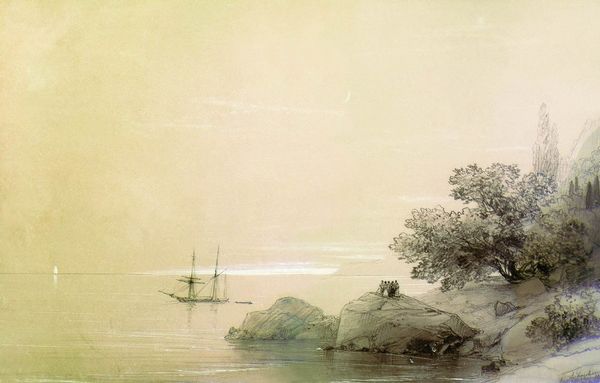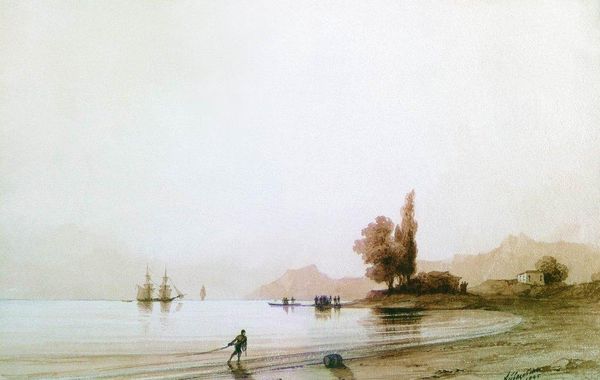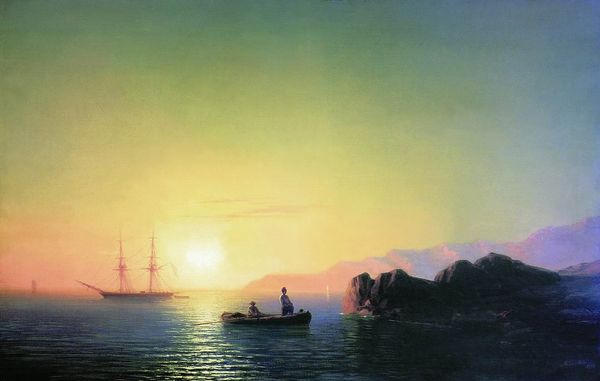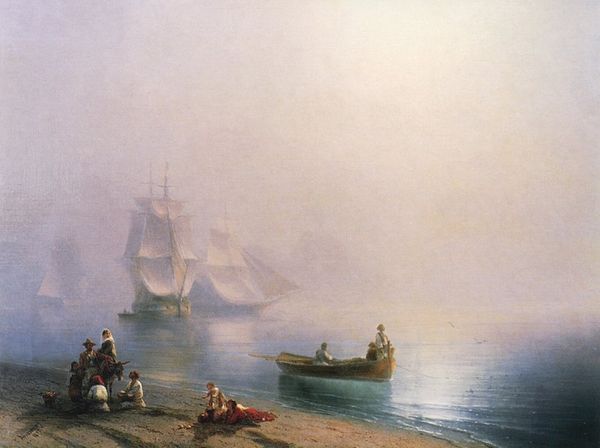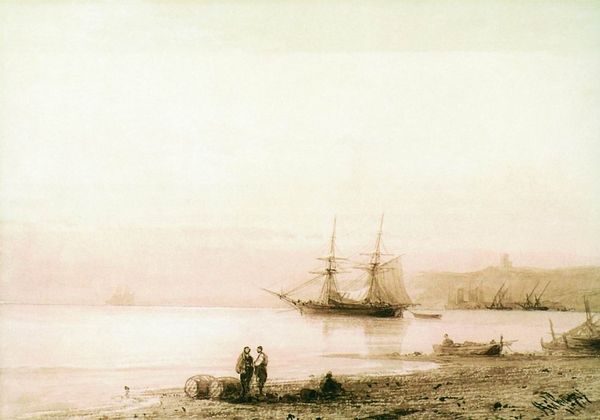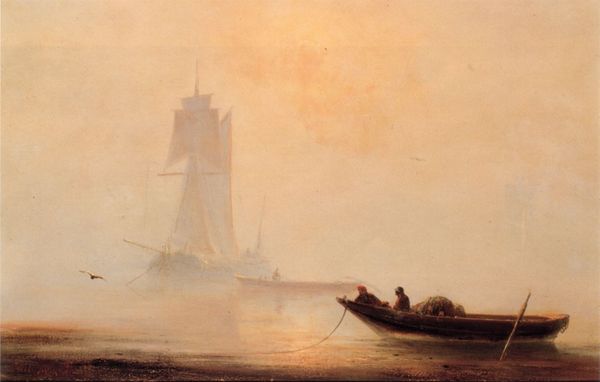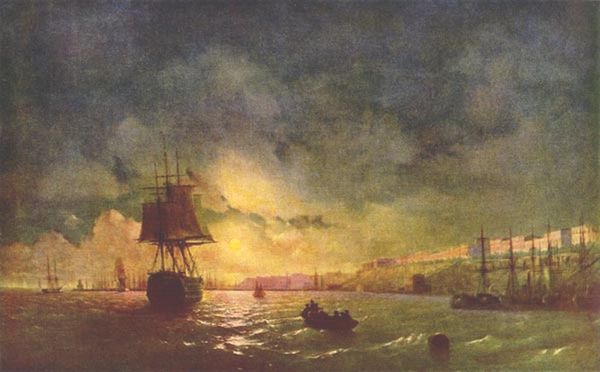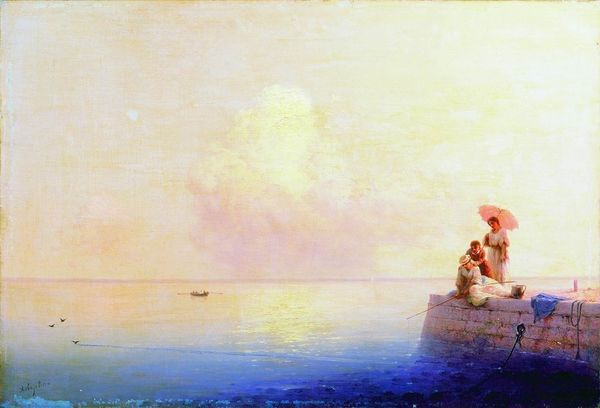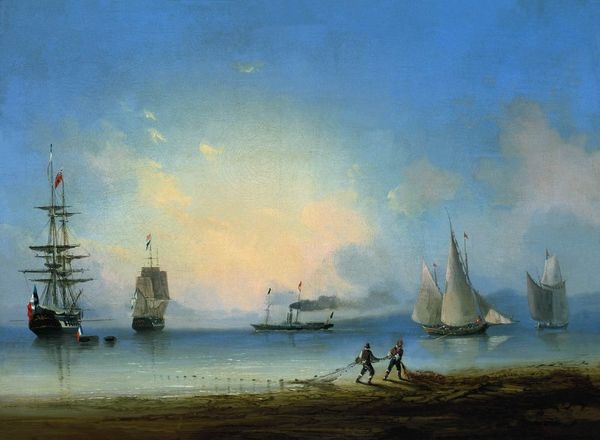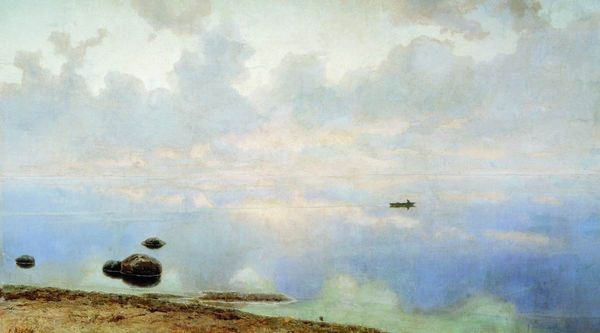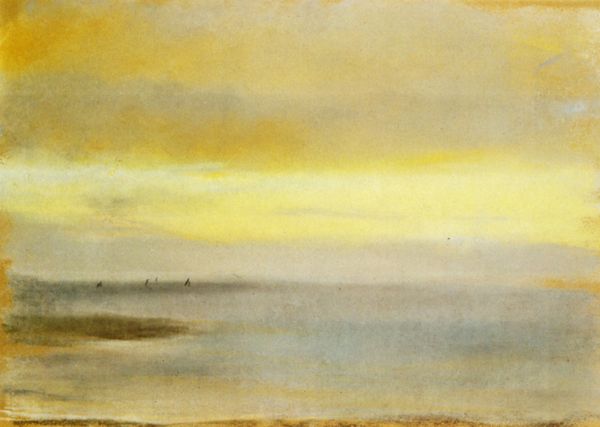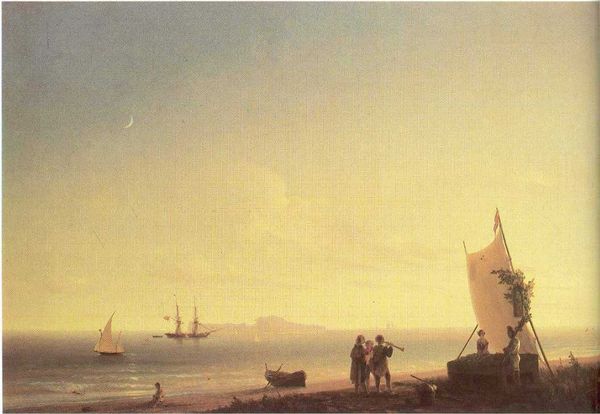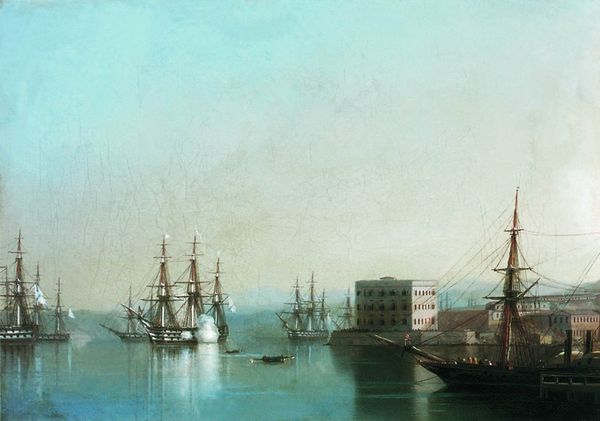
Copyright: Public domain
Editor: So here we have Ivan Aivazovsky's "Embankment of an Oriental Town," a watercolor painting from 1862. There's this incredible hazy atmosphere that really romanticizes the scene. What do you see in this piece? Curator: This image reflects the Orientalism movement popular at the time, where European artists depicted "the Orient," often filtered through a lens of European fantasy and power dynamics. Notice how Aivazovsky uses soft watercolors to create a dreamlike setting? He wasn’t necessarily painting reality. Editor: I see that. The hazy sky, the figures almost blending into the background... it's definitely idealized. Curator: Precisely. This work engages with the socio-political context of its time. Images like these often served to reinforce European notions of cultural superiority and justified colonial ambitions. What do you think a contemporary audience would have thought? Editor: Probably that the East was exotic and far away, removed from industrial advancements in Europe. Did he ever actually go to these "oriental" towns? Curator: Aivazovsky did travel to some of these regions, but even direct observation is mediated through personal and cultural biases. He was more concerned with creating a specific aesthetic experience than offering documentary truth. His focus on mood contributed to a larger project of romanticizing other cultures. Editor: That makes me think differently about it. The dreamy quality isn't just aesthetic; it's reinforcing a power structure. Curator: Exactly. We must look at whose perspective is centered, and what purpose the imagery serves within the broader political landscape. This oriental painting may function as more than simply "pretty." Editor: So, behind the hazy romanticism, there’s a whole history of cultural assumptions. Curator: Indeed. Thinking critically about the image allows us to unpack that complicated past. I will have to dig more to understand how the institution shaped perception through art.
Comments
No comments
Be the first to comment and join the conversation on the ultimate creative platform.
